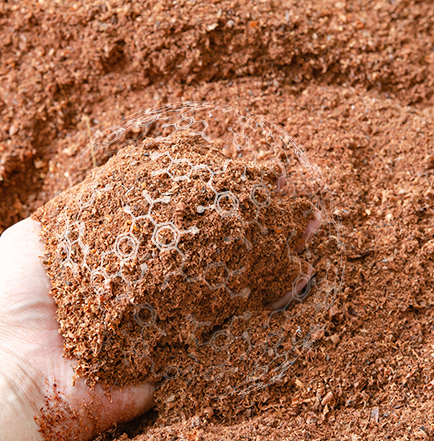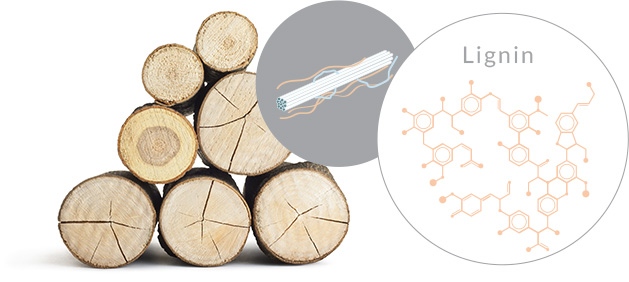Lignin
Lignin: Nature’s multifunctional treasure
Lignin, which is derived from the Latin word lignum, meaning wood, is the second most abundant biopolymer on earth, constituting the 20-30% of all superior plants, such as bushes, trees and bamboo.
This organic polymer is embedded in a cellulose and hemicellulose framework that together form the structure that gives plants their toughness and stability. Lignin is a complex phenolic network in the lignocellulosic cell wall, responsible for the plant lignification, which is the process that makes plants resistant to external hazards

Molecular structure and lignin properties

Each lignin is unique in its chemical structure, and – the combination and quantity of the polyphenolic units vary according to the plant source. This leads to different molecular interconnections and therefore diverse lignin structures which result in different functional properties. A great example can be observed in the difference between hard and softwood lignins.
Another variation of the chemical structure appears based on the extraction process. Lignin, being deeply connected into the plant cell, requires special extraction methods. The most common extraction method is the one used for the pulp and paper industry, named the Kraft process, which is not the most environmentally efficient. This process uses sulphates which are chemically harsh and create the most changes in the molecular structure of lignin.
On the other hand, second generation biorefineries use novel extraction methods like enzymatic hydrolisis, soda or organosolv processes. These extraction processes are more sustainable and result in lignin of higher purity and a better-preserved polymeric structure. This is possible thanks to the less intensive approaches that target the connections between cellulose, hemicellulose and lignin.
Advantages of lignin
Lignin represents up to 30% of the lignocellulose biomass, and yet it is a natural treasure that is still not fully exploited. In Lignopure we fell in love with lignin because it offers so many advantages, thanks to its plentiful active functional groups and good biocompatibility. These are translated into multiple natural functionalities that can be used in high-value applications.
Moreover, the ecologically friendly lignin has a positive CO2 footprint optimization because it is an upcycled material from renewable sources and is also a biproduct from biorefinery side streams. Finally, lignin can be biodegraded by wild microorganisms, like white rot fungus, which transform it into vital soil components.

